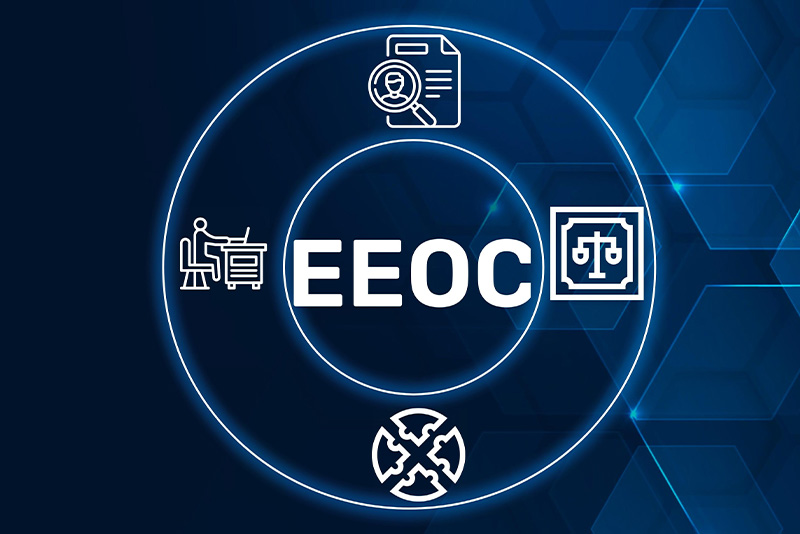
Navigating the Post-Loper Bright Era: A New Frontier for Employment Litigation Strategy
A recent federal court decision concerning an EEOC right to sue letter has profound implications for corporate decision-makers, signaling a critical shift in how federal employment discrimination statutes are interpreted. The case, Prichard v. Long Island University, represents one of the first judicial applications of the U.S. Supreme Court’s landmark 2024 decision in Loper Bright Enters. v. Raimondo—a ruling that eliminated decades of judicial deference to federal agencies.
The Prichard ruling essentially challenges the Equal Employment Opportunity Commission’s (EEOC) long-standing regulation that allows it to issue an “early” Right-to-Sue (RTS) letter, an outcome that employers must now factor into their litigation strategies.
The Prichard Precedent and the EEOC Early Right-to-Sue Regulation
Title VII of the Civil Rights Act (and by extension, the Americans with Disabilities Act) establishes a mandatory framework for pursuing discrimination claims. Generally, an individual must first file a charge with the EEOC. The statute dictates that the agency issues an EEOC right to sue letter only after either: (1) the EEOC dismisses the charge, or (2) 180 days have passed since the charge was filed, and the EEOC has not filed a lawsuit or entered into a conciliation agreement. This 180-day waiting period is a statutory precondition to filing a federal lawsuit.
However, the EEOC promulgated a regulation (29 C.F.R. § 1601.28(a)(2)) that allows it to issue an early RTS letter upon a charging party’s request if the Commission determines it is probable it won’t complete its administrative processing within the 180-day window. This regulation has historically been a lifeline for plaintiffs seeking to expedite their claims to court, but its validity has been contested, creating a split among federal circuit courts.
In Prichard, a New York federal court was confronted with this precise issue. The plaintiff, Cecilia Prichard, was terminated by Long Island University and filed an ADA charge. At her request, the EEOC issued an early RTS letter just 57 days later. The University moved to dismiss the ensuing lawsuit, arguing the early letter was invalid because the statutory 180-day period had not elapsed.
The Impact of Loper Bright Enters. v. Raimondo
The New York court sided with Long Island University, concluding that the EEOC’s early RTS regulation was incompatible with the clear text of the employment discrimination statute. Crucially, the court explicitly noted that the plaintiff’s reliance on prior cases that upheld the regulation were decided under the now-overruled Chevron deference standard.
The Supreme Court’s decision in Loper Bright vs. Raimondo eliminated this deference, asserting that courts, not administrative agencies, are the ultimate arbiters of statutory meaning. By applying Loper Bright, the Prichard court held that the EEOC had exceeded its statutory authority by issuing the EEOC right to sue letter before the mandatory period expired. This is a seminal moment, representing a direct judicial rejection of an EEOC regulation based on a post-Loper Bright textual analysis of the statute.
Learn more about Loper Bright Enters vs Raimondo’s impact on the Cheveron deference here.
Litigation Strategy Implications for Corporate Employers
For corporate decision makers, the Prichard case opens new strategic avenues regarding employment litigation:
- Controlling the Litigation Timeline: Employers may now be better positioned to challenge an early EEOC right to sue letter, ensuring that the plaintiff is forced to wait the full 180 days before properly filing a lawsuit. This can be a significant tactical advantage, providing the employer with additional time for preparation and potentially extending the plaintiff’s pre-suit timeline.
- Evaluating the Risk of EEOC Investigation: Historically, some employers have welcomed an early RTS letter because it ends the EEOC’s administrative process. A contested charge that remains with the EEOC for the full 180-day period risks a more thorough and potentially burdensome agency investigation, which may involve requests for information (RFIs) that can feel like “free discovery” for the plaintiff.
- Case-by-Case Analysis: The decision to challenge the validity of an early RTS letter is not a one-size-fits-all strategy. In matters where the evidence is overwhelmingly in the employer’s favor or the charge is highly sensitive, fighting the early RTS may be prudent to control timing. However, for charges that are factually complex or involve widespread practices, forcing the charge to remain with the EEOC for a prolonged investigation may carry the greater risk of a negative agency finding or an aggressive RFI that the employer would rather avoid.
The Prichard ruling demonstrates that in the wake of Loper Bright vs. Raimondo, the legal landscape for employment regulation is shifting. Corporate counsel must remain vigilant, as this case may be the first of many to challenge long-standing EEOC regulations that previously enjoyed judicial deference. Employers should work closely with experienced counsel to reassess their litigation strategies in this new era of judicial statutory review. Bleakley Platt & Schmidt’s Labor & Employment Law Practice Group can help clients adjust litigation strategies to account for this important change.